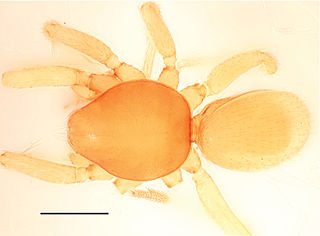Related Research Articles

The common dwarf mongoose is a mongoose species native to Angola, northern Namibia, KwaZulu-Natal in South Africa, Zambia and East Africa. It is part of the genus Helogale, along with the Ethiopian dwarf mongoose.

Urodidae, whose species are commonly known as false burnet moths, is a family of moths in the lepidopteran order. It is the type genus in the superfamily, Urodoidea, with three genera, one of which, Wockia, occurs in Europe.

The little yellow bat is a species of vesper bat found only in Mexico.

Veillonella parvula is a strictly anaerobic, Gram-negative, coccus-shaped bacterium in the genus Veillonella. It is a normal part of the oral flora but can be associated with diseases such as periodontitis and dental caries as well as various systemic infections, including meningitis and osteomyelitis. It has also been isolated from women with bacterial vaginosis and has been associated with hypertension together with Campylobacter rectus and Prevotella melaninogenica.

Quercus parvula, the Santa Cruz Island oak, is an evergreen red oak found on north-facing Santa Cruz Island slopes and in the California Coast Ranges from Santa Barbara County north to Mendocino County. It was taxonomically combined with Quercus wislizeni until resurrected as a separate species by Kevin Nixon in 1980. The type locality of Q. parvula var. shrevei is Palo Colorado Canyon in Monterey County. It is placed in Quercus section Lobatae.

Holothuria parvula, the golden sea cucumber, is a species of echinoderm in the class Holothuroidea. It was first described by Emil Selenka in 1867 and has since been placed in the subgenus Platyperona, making its full scientific name Holothuria (Platyperona) parvula. It is found in shallow areas of the Caribbean Sea and Gulf of Mexico and is unusual among sea cucumbers in that it can reproduce by breaking in half.

Scutellaria parvula, commonly known as the small skullcap, is a member of the mint family. It is native to eastern and central North America, being most common in the central states and become rare in the east. It is found in areas that provide ample sunlight, such as prairies, glades, and savannas, often in calcareous soil. Flowering time is from late spring to early summer.
Forsteriini is a tribe of longhorn beetles of the subfamily Lamiinae.

Neohebestola is a genus of longhorn beetles of the subfamily Lamiinae, containing the following species:

Bannana is a genus of goblin spiders native to Xishuangbanna prefecture, Yunnan Province, China, where it lives in the leaf-litter of tropical rainforest. There are two known species: Bannana crassispina and B. parvula, both described in 2015. Individuals are pale yellow and unpatterned, and range from around 1.0 to 1.8 mm in body length, with females being slightly larger than males. The eyes are reduced or entirely absent. Known only from a nature reserve in Xishuangbanna, Bannana belongs to a group of Asian goblin spiders known as the "Dysderoides complex", that ranges from China to Pakistan and south to Indonesia.

Pachycondyla parvula is an extinct species of ant in the formicid subfamily Ponerinae described by from a fossil found in Europe. P. parvula is one of six Lutetian Pachycondyla species.
Neohebestola apicalis is a species of beetle in the family Cerambycidae. It was described by Fairmaire and Germain in 1859. It is known from Chile.
Neohebestola brasiliensis is a species of beetle in the family Cerambycidae. It was described by Fontes and Martins in 1977. It is known from Brazil.
Neohebestola concolor is a species of beetle in the family Cerambycidae. It was described by Johan Christian Fabricius in 1798.
Neohebestola humeralis is a species of beetle in the family Cerambycidae. It was described by Blanchard in 1851. It is known from Chile.
Neohebestola luchopegnai is a species of beetle in the family Cerambycidae. It was described by Martins and Galileo in 1989. It is known from Chile.

Neohebestola petrosa is a species of beetle in the family Cerambycidae. It was described by Blanchard in 1851. It is known from Chile.
Neohebestola vitticollis is a species of beetle in the family Cerambycidae. It was described by Blanchard in 1851. It is known from Argentina and Chile.
Nepenthes parvula is a tropical pitcher plant native to the Cape York Peninsula of Queensland, Australia.
Rhogeessa velilla, also called the Ecuadorian little yellow bat, is a species of vesper bat in the genus Rhogeessa. It is found in Northwestern Peru and parts of Ecuador. The species was previously included in R. io, but is now recognized as a separate species. Very little is known about this species, though it is generally considered to be insectivorous.
References
- ↑ BioLib.cz - Neohebestola parvula. Retrieved on 8 September 2014.